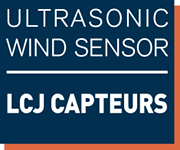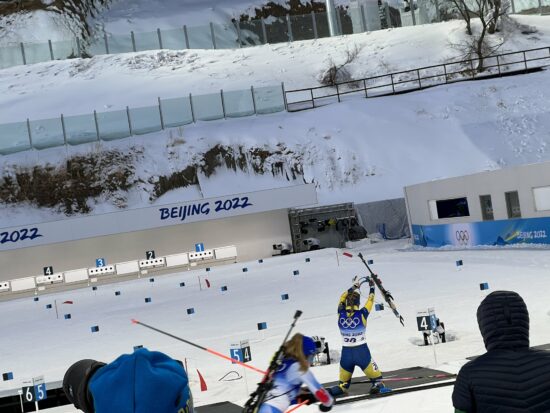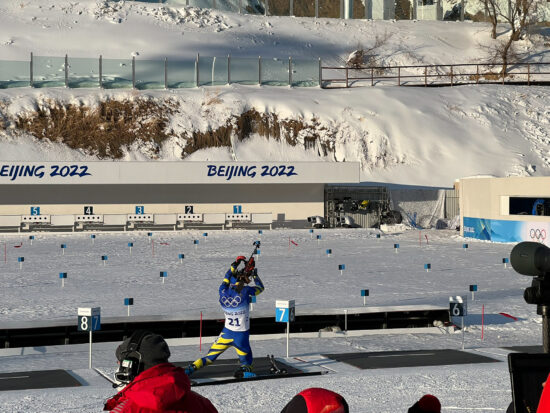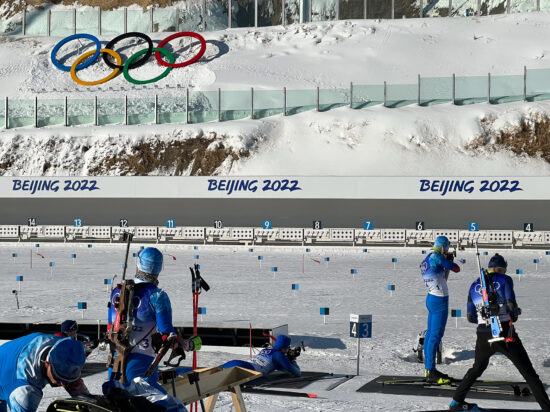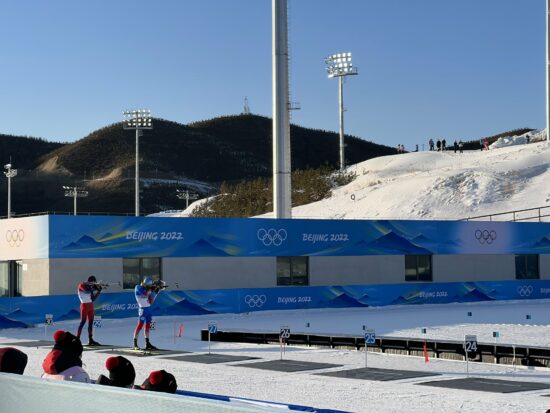01 Apr The influence of wind in biathlon: CV7-V ultrasonic wind sensor at the Olympic Games
The 2022 Olympic Games have just ended and we have the pleasant surprise to see our CV7-V ultrasonic wind sensors on the Biathlon events in front of our screens. So first of all, we would like to congratulate all teams for their performance at the Olympic Games and especially the french biathlete Quentin Fillon-Maillet for his gold medal!
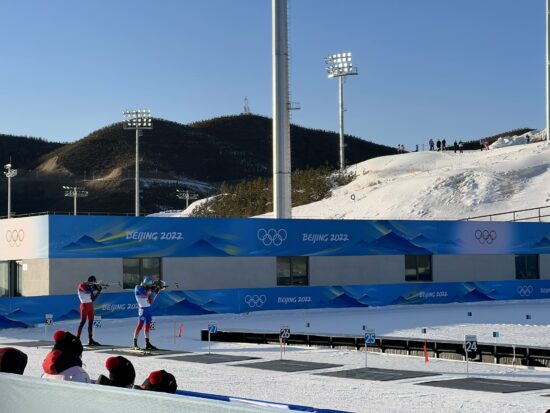
In 2022, the Olympic Games were held in the Chinese capital, Beijing. More precisely, the different competitions were held in 3 places:
- Beijing, where most of the events are done in the city,
- Yanqing area, for alpine skiing, bobsleigh, luge and skeleton,
- Zhangjiakou area, more precisely in Taizicheng, more than 150 km away from the capital, to be able to realize the competitions with snow.
The city of Taizicheng has hosted various sports of the Winter Olympics, such as biathlon, cross-country skiing, ski jumping, freestyle skiing and snowboarding.
In this article, we will focus on biathlon.
What is biathlon?
The different biathlon trials
To begin with, biathlon is a winter sport that combines several disciplines: cross-country skiing and shooting.
There are 6 types of trials in this discipline:
- Individual,
- Sprint,
- Pursuit,
- Relay,
- Mass start,
- Mixed Relay.
Each trial has its own “rules”, for more information, do not hesitate to inquire here.
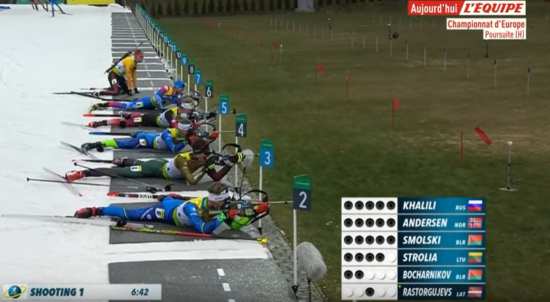
What are the rules of biathlon?
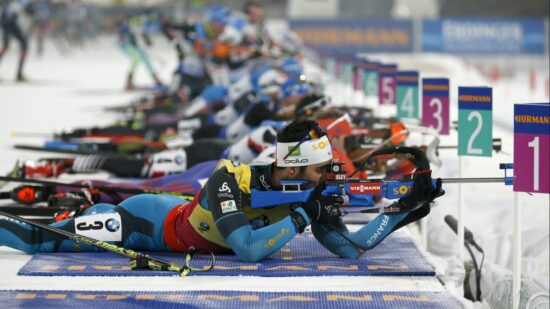
When we discovered this sport, we had many questions about the rules of this type of sport. We did a lot of research to explain you the main lines. You have to know that in the Olympic Games, there are 11 different trials, 5 for men, 5 for women and 1 mixed. And each trial contains different rules of distances, penalties and objectives.
Depending on the trial, the start is staggered or in groups. The race is interspersed with two or four shooting sessions and cross-country ski laps that range from 2.5km to 4km. After a lap, the skiers take off on the shooting track. The difficulty is to control the shot despite the breathlessness caused by the race.
The shooting is done in the standing or lying position. For the standing position, the skier must be stopped and the poles placed on the ground. In the prone position, the competitor may rest his elbows on the ground. The shooting distance is always 50 meters. The objective is to shoot at 5 targets. The targets have a diameter of 45mm for prone shooting and 115mm for standing shooting. Missed targets must be made up for by penalties. In most of the trials, each one leads to a penalty round of 150 meters, except in the individual event where a missed target adds 1 minute to the time.
What is the influence of wind in biathlon?
During the cross-country skiing portion of the biathlon, the wind does not make much difference to the race.
However, during the shooting trials, the influence of the wind in biathlon is present, as the wind affects the trajectory of the bullet on the target. At a distance of 50 meters, the ball can experience several gusts of wind. For this reason, several red flags are placed on the shooting range. This indicates to the shooters the strength and direction of the wind. Although not accurate, it is useful to get a general idea of the wind strength and direction.
Credit : BMW IBU World Cup Biathlon
To know the true influence of wind during shooting, Olympic sports professionals need more accurate measuring instruments. One of LCJ Capteurs’ customers, Suomen Biathlon Oy, the Finnish company uses CV7-V ultrasonic wind sensors at these competitions.
The ultrasonic anemometer are placed at the shooting range, a few meters from the ball trajectory. The wind data tells the coaches the true direction and speed of the wind the ball is experiencing and the influence of the air flow on its trajectory. In this way, coaches can evaluate the influence of the wind on the accuracy of the biathlete’s shots, which is a precious help. Indeed, in case of failure to shoot, the coaches can determine the cause:
- the wind or a gust,
- a bad adjustment of the sight,
- a finger tap on the trigger of the rifle.
On the other hand, the measured wind data are useful for the retransmission of wind information to the media for video insertion during live images broadcast.
How does our CV7-V ultrasonic wind sensor stand out at the Beijing Olympics?
This is not the first time our sensors have been seen in biathlon competitions. Since 2014, Suomen Biathlon Oy, better known as Biathlon target system Kurvinen, have been using our CV7-V ultrasonic wind vane anemometers for biathlon. Our first image is from a competition in Estonia from 2018! And we already talked about it in March 2020 in the article “LCJ Capteurs prensent in Biathlon”.
Since then, the ultrasonic wind vane-anemometers stand out for their reliability and its accuracy as they offer precise wind speed and direction data, despite very low temperatures. The Finnish company SUOMEN trusts us since they regularly install them to know the influence of the wind in biathlon during the big competitions, in particular during the Winter Olympic Games in Beijing.
Moreover, the sensor remains discreet in competition because it is very compact with its 64 mm diameter and its white color.
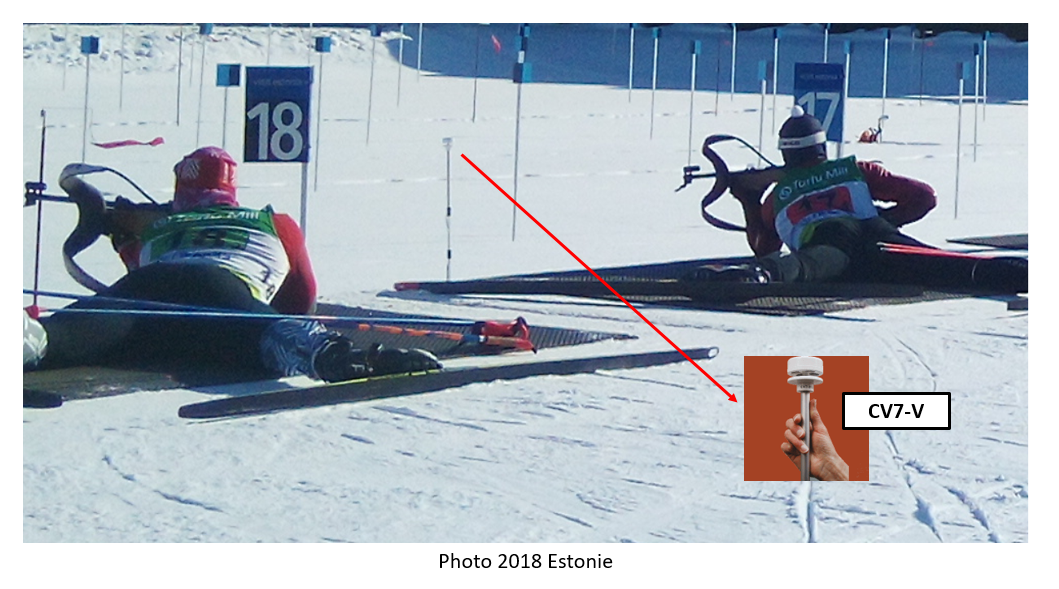
We add wind information to our shooting data when we have possibilty to take equipment with us. This means that on most of world cups were they have our targets, your LCJ Capteurs anemometers are in use.
The CV7-V ultrasonic wind sensor: the ultimate all-rounder!
The CV7 ultrasonic wind sensors are known for their versatility in use. Patented in 2007, its technology allows the transducers to communicate in lateral pairs. This sensor, mounted on a 31 cm long aluminum arm, is ideally placed at height to encounter as little turbulence as possible. Today, it is used as well on :
- Sailing boats,
- the harbour master’s office,
- trawlers,
- harbour cranes,
- transport and rescue boats,
- as well as on connected buoys.
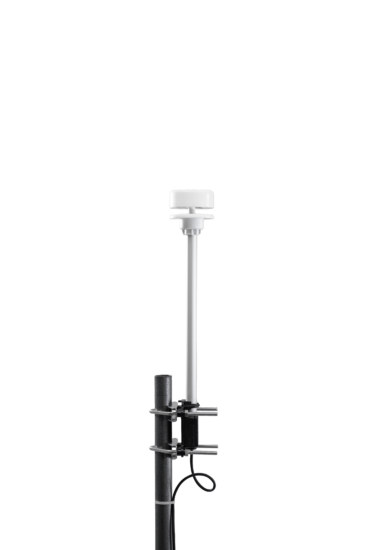
It is also used in the terrestrial market, notably in :
- precision agriculture,
- small wind power,
- public safety,
- air quality,
- intelligent buildings,
- sports (like the Biathlon),
- and many others.
In 2011, LCJ Capteurs entered the terrestrial domain by also offering ultrasonic wind sensors with specific protocols for this market. It all started when a Danish distributor of intelligent building management products found himself on a sailboat equipped with an LCJ Capteurs CV7 ultrasonic wind vane-anemometer model. He was immediately interested in purchasing the device after seeing the strange device on the masthead. LCJ Capteurs received a request for information, a price and a firm order shortly after. After some adjustments on the fixing part, the adventure on the terrestrial market thus started.
LCJ Capteurs adapts to the needs of the markets, by making “custom-made” sensors according to specifications defined with the user. The Nantes-based company continues to emphasize its spirit of innovation and adaptation to meet constantly changing needs.
